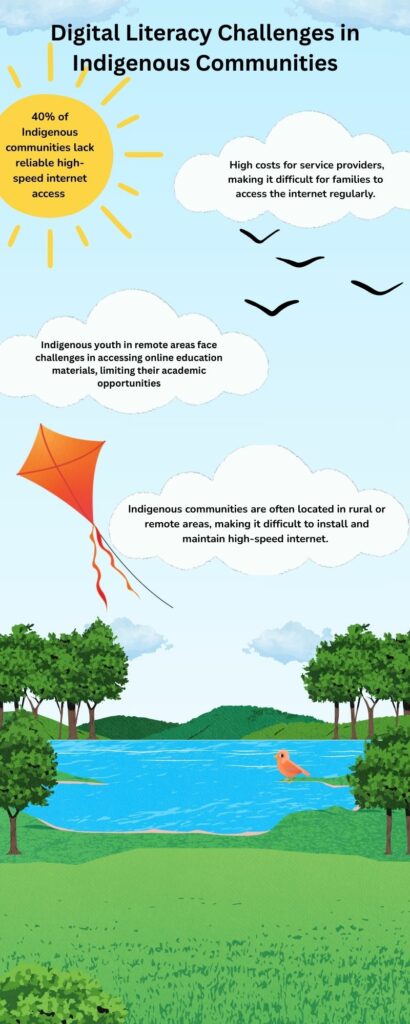Deeper Dive Inquiry
Particularly in British Columbia, my research on digital literacy among Indigenous people has revealed how technology is becoming a potent tool for cultural preservation, language revitalization, and community strengthening—rather than just a modern convenience. Digital tools are changing knowledge access and sharing channels and provide vital assistance for preserving old knowledge and cultural traditions. From technological access restrictions to the ongoing digital gap endangering advancement, the path is not without major obstacles either.
Lack of good internet connectivity is a key obstacle Indigenous people have in using technology for cultural preservation. Reliable high-speed connections simply do not exist in far-off areas of British Columbia, particularly in northern communities, which creates actual obstacles to accessing online educational resources, cultural archives, or virtual community events. “Internet access is a key enabler for the digital literacy needed to empower Indigenous communities in the 21st century,” the First Nations Technology Council (2020) states clearly. Yet, the digital divide remains a recurring issue that keeps Indigenous peoples from fully engaging with digital opportunities.

- Social Isolation
- Lack of connectivity isolates Indigenous communities from global conversations, networks, and resources.
- Communities are excluded from digital social activism, missing out on important conversations.
- Economic Disadvantage
- Limited internet access affects local businesses by effecting their ability to engage in online marketing or access digital marketplaces.
- Job opportunities are often missed as many positions require digital skills and online application processes, leaving remote Indigenous communities at a disadvantage.
For Indigenous communities throughout Canada, internet connectivity is more than just a convenience; it’s a lifeline that many currently lack, particularly in remote and rural areas. In addition to cutting off important educational pathways and separating communities from larger social and economic possibilities, this connection gap gravely threatens attempts to preserve Indigenous languages and cultural practices. Addressing this digital gap calls for significant investments in infrastructure, affordable internet options, and strategies that empower local communities. Closing these gaps in technology gives Indigenous peoples opportunities to protect their cultural legacy, participate in international discussions on their own terms, and forge stronger economic and educational pillars. Resolving this connectivity problem is really about empowering Indigenous self-determination and establishing real possibilities for communities, not simply about technology.
References:
- First Nations Technology Council. (2020). Bridging the digital divide in Indigenous communities. Retrieved from https://www.fntc.ca
- McIvor, O., & Williams, L. (2020). The impact of digital tools on Indigenous language revitalization. Indigenous Policy Journal, 31(1), 40-58.
- Smith, D. (2022). Bridging the digital divide in Indigenous communities. The First Nations Technology Council. Retrieved from https://www.fntc.ca